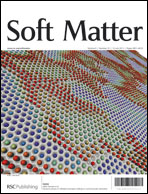Using molecular dynamics (MD) simulations and density functional theory (DFT) calculations, we systematically study the effective pair potential between two particles induced by unconnected monomers and by polymers at various polymer concentrations (above the overlap), particle sizes, and polymer–particle interactions. In the case of athermal interactions, we verify that the entropic depletion forces between two nanoparticles inside a solvent of unconnected monomers oscillate in accordance with the radial distribution of monomers around one nanoparticle, and that the strength of polymer-induced entropic depletion forces rises linearly with the increase of nanoparticle size. These results are quite consistent with previously obtained experimental and theoretical results. When introducing attractive interactions between nanoparticles and polymers, the adsorption of polymer segments on the surface of each nanoparticle induces repulsive forces between the nanoparticles which can eliminate the depletion attractions. Enhancing the attraction between monomers and nanoparticles leads to the formation of thin polymer-layers on the surfaces of nanoparticles. As a consequence, the depletion attraction reappears at a somewhat increased particle distance. The observed phenomena become increasingly pronounced at higher polymer concentrations. Throughout this work we systematically compare computer simulation results with predictions from density functional theory and show that the data obtained with both approaches are quite consistent with each other.

You have access to this article
 Please wait while we load your content...
Something went wrong. Try again?
Please wait while we load your content...
Something went wrong. Try again?


 Please wait while we load your content...
Please wait while we load your content...